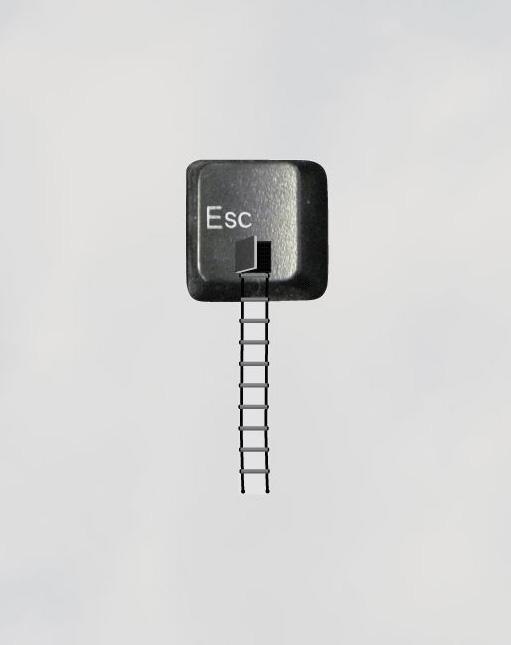

Escaping
The Authors




The coordinates on the paper correspond to a place we each like to escape to!








Maria Anna Tankielun
Tom Sellmair
Nina Wiehler
Carlotta Macri
Lisa Maier
Katja Zhiltsova
Atike Bolat
Alicia Barth
Anisha Brun
Yarimiya Adouba
Lucas Wörl
Nicholas Jacob-Flynn
Editorial

Dear Readers,
Welcome to the 12th edition of the mæɡəˈziːn!
Escaping can mean a lot of things. When we asked ourselves the question of how to define this term, we all – the eleven authors of this edition – came up with very different solutions. Whether metaphorically or literally speaking, the concept and act of escaping has many facets: it can be a simple flight from reality or an act of resistance and rebellion. The possibilities are endless.
In this magazine, we tried to show exactly this: what escaping can mean, coming from multiple backgrounds, with different experiences, and unique perspectives on life. With our wide-ranging topics, from fictophilia to procrastination to the great escape of Alcatraz, we hope to offer you some new perspectives, some laughs, and some fun quiz time!
We hope you enjoy our little creative project as much as we had while completing it.
Your Editor,
Alicia
Fight or Flight?
Lucas Wörl ......................................................
The Shawshank Redemption - What it takes to redeem yourself after a lawyer did you wrong
Maria Anna Tankielun ...................................
Case Closed but Still Among Us? - The Great Alcatraz Escape
Tom Sellmair....................................................
Escaping Russia: A Love Story Against All Odds
Katja Zhiltsova.................................................
Art Meets Antifacism: Claude Cahun’s Surrealist Rebellion
Alicia Barth......................................................
Blurring Realities - How the Phenomenon of Shifting Alters our Understanding of Reality
Lisa Maier.........................................................
Stealing Hours from the Night: The Psychology of Revenge Bedtime Procrastination
Atike Bolat........................................................
Escaping Reality and Shaping Fantasy
Carlotta Macri..................................................
Forging Your Identity: When New Social Media Trends Tell You Who You Are
Nina Wiehler....................................................
Button-eyed Madness - A Movie Reciommendation
Lisa Maier........................................................
Fictophile or Fictofreak: Is Falling for Fictional Characters Really That Bad?
Yarimiya Adouba.............................................
Diary Entry
Atike Bolat........................................................
Blood, Sweat and Ink
Yarimiya Adouba .......................................
Unlocking the Power of Music through Emotions
Anisha Brun................................................
Only One Click Away: Meditation To Go
Alicia Barth.................................................
Digital Detox: My Self-Experiment on How to Escape Virtual Reality and to Build a Healthier Relationsip to My Phone
Solutions for Crossword Puzzle and Quiz............. 5 8 10 11 12 13 14 15 16 18 19 20 21 22 24 25 26 28 30 32 34 6 7
Nina Wiehler.........................................................
How to Step Up Your Procrastination Game
Maria Anna Tankielun.........................................
“Sweatizens” of the Gym
Lucas Wörl...........................................................
Mighty Hot-Dogs and Magical Desserts - The Ten Best Food Spots at Disneyland Paris
Carlotta Macri......................................................
Top 3 Must-Visit Destinations in Zurich
Anisha Brun..........................................................
Escape Crossword
Katja Zhiltsova......................................................
Escaping the Magazine
Tom Sellmair.........................................................
Fight or Flight?
by Lucas Wörl
A brief insight into extraordinary escape mechanisms of wildlife.
Imagine finding yourself in an unpleasant situation you urgently want to escape. Wouldn’t it be nice to simply spray ink in everyone’s faces and quickly disappear, like a cuttlefish? Or to retreat into a portable shell, like a tortoise, to avoid an embarrassing moment? While these strategies might seem uncommon for humans, they are important survival tactics for certain animals. The natural world is full of fascinating and extraordinary escape mechanisms. Let’s explore two of the most interesting examples in wildlife.
The Cephalopods: Masters of Disguise and Evasion
Most cephalopods, such as cuttlefish, squids, and octopuses, are true masters of disguise and escape, using a variety of amazing tactics to fool predators. The release of a cloud of dark ink, which hinders an attacker's vision and buys them the time needed to escape, is their most prestigious escape technique. This isn’t the case for all cephalopods. Nautiluses, for instance, are protected through their hard shells instead of an ink sac. The cephalopods’ set of skills does not stop here. Specialized cells called chromatophores allow octopuses, squids, and cuttlefish to instantly change the color and pattern of their skin. This enables them to blend in with their environment or imitate other marine life. Here, the nautilus once again stands apart, lacking

dynamic cmouflage abilities, while deepsea creatures like the vampire squid emit bioluminescentmucus instead of ink defenses.

Tortoises: Nature’s Calm, Living Tanks
At first glance, tortoises appear to be ponderous and defenseless creatures. But if we take a closer look at their defensive abilities, it seems that the complete opposite is true. Tortoises are not known to be exceptionally fast runners. For example, Bertie, the fastest recorded tortoise, reaches a maximum speed of about 1 km/h. Though slow on their feet, those genial beings make up for it with astonishing agility in their necks. Tortoises are so-called ‘hidden-neck- turtles,’ which means that they can retreat their head vertically by forming an S-shape with their cervical spine inside their shell. Originally, the incredible mobility of the head likely evolved for attack and only later became a defense mechanism.
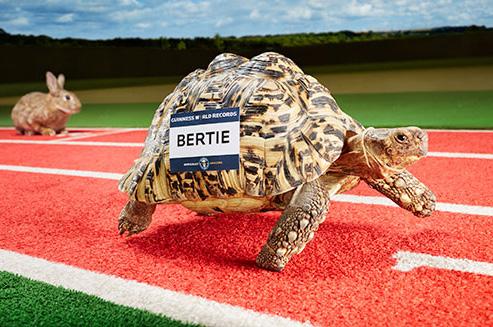
Taking Nature as an Example
These exemplary yet contrary defense methods prove that nature has provided their creatures with an extraordinary set of survival tools. Whether it is the cephalopods’ capacity to disappear in a cloud of ink or the tortoise’s unwavering reliance on its robust shell and its quick neck, these adaptations demonstrate how remarkably inventive evolution has been. We should be aware of the uniqueness of our animal co-inhabitants and do our best to protect them. So, next time you face a tricky situation, you can take inspiration from nature – whether it’s a clever escape or a moment of quiet retreat, there’s always a way to adapt and persevere.
The Shawshank Redemption –
What it takes to redeem yourself after a lawyer did you wrong
by Maria Anna Tankielun
Being incarcerated for being unable to prove your innocence. Have you ever wondered how you would deal with a mandatory vacation behind bars? The Shawshank Redemption (1994) tells the story of Andrew Dufresne, a well-educated and law-abiding banker who is falsely convicted of the premeditated murder of his wife and her lover. With the evidence – or lack thereof – turned against him, he is convicted to serve two life sentences in the Shawshank Prison. To quote
le both more and less fortunate events rain down on the friend group, Andy seems to serve as a constant torch of hope for hearts that long have given up on it. Learning to play by the rules of the prison, he shows the audience a different side of his character which is cunning, calculated and manipulative. However, this movie is far from being a cliché story of a “good boy gone bad”.
“Get busy living or get busy dying.”
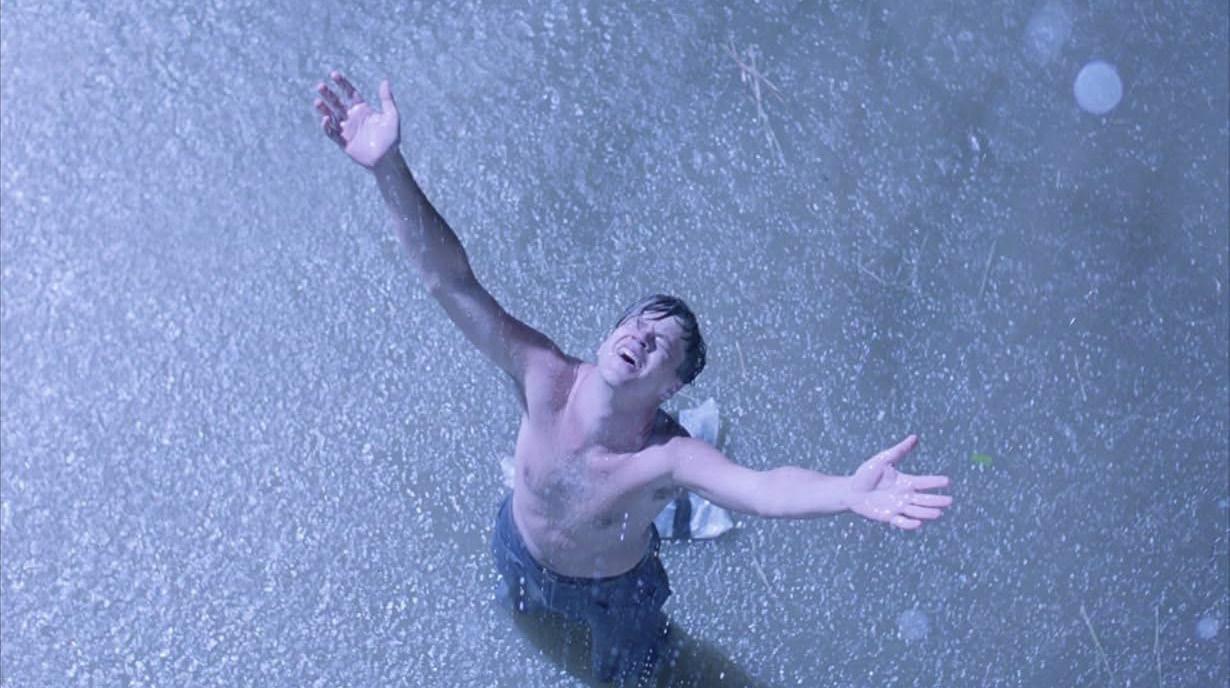
Personally, I think that The Shawshank Redemption is a fantastic movie that not only has a very refined cinematography that tells what can’t be expressed through words (although Morgan Freeman’s narration is pure joy to listen to), but it is a story with a lot of depth to it, leaving you with many opportunities for self-reflection. This movie shifted me out of my comfort zone and made me ask myself: Do I have any prison breaks to make in my life? And, dear reader, do you?
the prosecutor, “Very convenient, isn’t it, Mr. Dufresne?” “On the outside, I was an honest man, straight as an arrow.” Andy strikes both the audience as well as the other prisoners as different to everyone. Tim Robbins brings the character to life by putting on a determined, matterof-factly attitude, showcasing witty dialogues held between Andrew and the inmates in a way that keeps even the most skeptical viewers entertained. His sincerity and good will win over a group of convicts, including prison smuggler Ellis Boyd “Red” Redding (Morgan Freeman) who become his friends and supporters in Shawshank.
“I had come to prison to be a crook.”
Soon, it becomes obvious that the system that Andy knows from the outside world doesn’t apply to prison. It gets difficult to find a balance between what is right and what is wrong, whom you can trust and whom you cannot. Whi-

The Shawshank Redemption. 1994. Dir. Frank Darabont. With Tim Robbins, Morgan Freeman and Bob Gunton. Columbia Pictures.
Case Closed but Still Among Us?
by Tom Sellmair
The Great Alcatraz Escape
How three men escaped from the infamous Alcatraz prison in 1962.

The mystical atmosphere in a hell-like place
The cold waves of San Francisco Bay lapped against the rocky shoreline of Alcatraz Island as darkness cloaked the infamous prison where some of America’s most notorious criminals like Al Capone and Machine Gun Kelly served time. Inside the shadowy walls, Frank Morris sat at the edge of his bunk, his heartbeat syncing with the relentless crash of the tides. For months, he and his accomplices, John and Clarence Anglin, had plotted an escape from „The Rock“. A seemingly impossible task no one had accomplished successfully. Frank‘s hands trembled as he held the drill they had fashioned from a broken vacuum cleaner motor. It had taken weeks of painful and risky work to widen the vent in his cell. The noise had to be muffled by singing or clattering tin cups, and every grain of cement chipped away was carefully concealed. The plan was daring, the stakes impossibly high, but desperation was a powerful motivator.
The escape
The night finally arrived. After they perfectly placed their self-made lifelike masks made of toilet paper, soap, concrete dust, paint and real hair from the prison hairdresser in their beds,
the three men moved like shadows, slipping through their cell walls into the dark utility corridor. Here, between pipes and wires, they had constructed a workshop. Frank checked the life vests they had stitched from raincoats, testing each seam for strength. The Anglins laid out the pieces of their temporary raft, another triumph crafted from stolen materials. Finally, they crawled through the service tunnels to the roof. The air was cold and sharp, filled with the scent of seaweed and freedom. Dropping silently to the ground, they navigated the prison‘s perimeter, their hearts pounding at every flicker of the guards‘ searchlights. Reaching the shore, they inflated the raft using a concertina transformed into a sort of bellows.

The fight for survival
As they pushed off into the icy waters, the prison faded into the mist. Hours passed in silence while each man focused solely on survival. When dawn approached, Alcatraz was gone, swal-
lowed by the horizon. The raft drifted towards the mainland, but what awaited them there -freedom or capturewas uncertain.
The escape’s ending remains shrouded in mystery. Did they make it through the cold and dangerous waters and still live among us or were they victims of the San Francisco Bay? Whatever really happened, one truth remains: the trio had achieved the impossible, leaving behind a legend that still haunts Alcatraz to this day.

Escaping Russia: A Love Story Against All Odds
by Katja Zhiltsova
When love becomes an act of defiance, survival demands extraordinary courage. For Jan and Jens, a non-binary queer couple from Moscow, the decision to leave their homeland was both a choice and a necessity. Facing Russia's oppressive homophobia, relentless political repression, and the looming shadow of war, they fled first to Georgia and eventually to Germany. Along the way, they took a step they could only dream of in Russia: they got married.
Homophobia in Russia: A Constant Battle

Jan and Jens getting married in Germany
Homophobia in Russia, Jan explains, is rooted in Soviet-era attitudes that persist to this day. Their mother’s words still echo in their memory: “Don’t show affection around your younger brother—it might ruin him.” That fear of difference, they say, stems from a culture that demands conformity, where “anything different is seen as dangerous.” For Jens, the experience was no less fraught. While their father didn’t outright oppose their relationship, he struggled to process it. “He has these experience blanks, where there
should be understanding,” Jens says. “Instead, he fills those gaps with cultural and homophobic traditions because there’s nothing else to go on.”For both Jan and Jens, living authentically as queer individuals in such an environment often felt impossible.
A Choice Born of Necessity
The war in Ukraine was the breaking point. Jens explains how being politically active in Russia had become increasingly dangerous. “A friend was arrested for attending a peaceful demonstration,” they recall. “We knew it wasn’t safe anymore.” In March 2022, the couple left Moscow. Jan admits the move was painful. “It hurts that we can’t go back,” they say. “The home we remember doesn’t exist anymore.” But starting over in Germany offered them a chance to live freely and take steps they could never have taken in Russia. “It wasn’t just about us,” Jens says of their marriage in Germany. “It was about reclaiming something we had been denied for so long.”
A Legacy of Activism
Jan’s perspective on resistance was shaped by their family. Their parents were politically active and protested as early as 2012, during Jan’s childhood. “I remember them going separately so they wouldn’t be arrested at the same time,” Jan says. “That left a huge impression on me—they showed me what it meant to care about change, even if it was risky.” This legacy of activism continues to shape their views on Russia’s current political system.
Suffocating
For Jens, the state of Russia feels “suffocating.” Corruption, they explain, prevents resources from reaching where they’re needed- minorities, education, and healthcare. Instead, funds are funnelled to oligarchs’ castles and military projects. Jan is very direct in their criticism of Putin. “He has centralized power to a point where Russia is essentially his empire,” they say. “He makes all the decisions in his bubble, completely out of touch with reality.” Elections, they add, no longer allow real candidates to participate.
Hope Amid Uncertainty
Jens believes that Russia’s future hinges on radical change. “For Russia to be free and happy—and those two things go hand in hand— there has to be radical change. Putin must leave office, ideally facing a trial,” they say. But Jan admits to feeling conflicted about the possibility of returning. “Many immigrants who left Russia in the beginning of the 20th century thought they’d go back home in a few years but died in exile,” they explain. “We’re trying to build a life here in Germany without waiting for something that may never happen.”
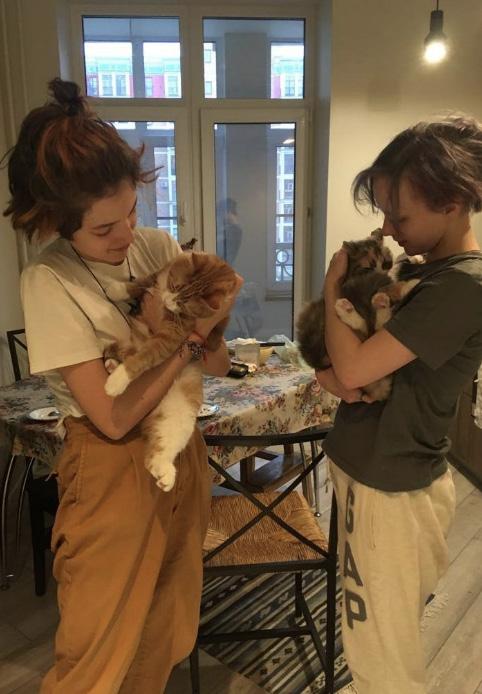
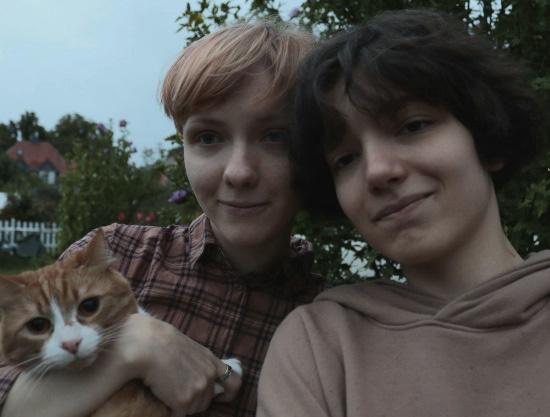
A Message to the World
Jan and Jens want to remind people that “Russia isn’t its government.” Incredible people remain, Jens says, who “deserve freedom and dignity.” The regime in Russia has harmed so many, inside and outside its borders. Jan adds that the fight to be true to oneself is worth the effort, even if it means starting over. “We’ve had to rebuild,” they say, “but it’s better than living a life where we couldn’t be ourselves.”
Jan and Jens back in Moscow
Jens and Jan with their cat
Art Meets Antifacism: Claude
Cahun’s Surrealist Rebellion
by Alicia Barth
The surrealist movement is more than hauntingly weird art. In this article, we will investigate a feminist figure in a world of dreams and fantasy – photographer and writer Claude Cahun.
Beyond the Binary
Masculine? Feminine? It depends on the situation. Neuter is the only gender that always suits me.” Claude Cahun was always beyond the binary. The surrealist photographer breached society with their* daring, unconventional self-portraits and fascinating deconstruction of identity, inspiring big names of our time, from David Bowie to the fashion label Dior. Cahun, born in 1894 as Lucy Schwob, grew up in an academic, Jewish household and aimed early for an outstanding career that went against traditional Surrealist ideas.
Something New, Something Shocking
Cahun was sick – sick of the purely erotic and symbolic imagery of women by male surrealists like Dalí and co. So, they created something new, something shocking. Posing with masks all over their body, with silver foil wings, or their iconic “I am in training, don’t kiss me” body suit, Cahun explored the facets of their personhood without the ob jectifying note that surrealist enthusiasts were used to. “My soul is fragmentary”, so the artist in Disawovals, or Cancelled Confessions, their most famous and perhaps most conventional surrealist literary work. As the multiple dreamlike photomontages already suggest, the various ‘essay-poems’ offer a glimpse into Cahun‘s psyche, their nightmares, dreams, and the maze of their subconscious.
Paper Bullets
However, Cahun did not only break up with society in one way. During the Second World War, Cahun and their partner Marcel Moore were active members of the French resistance in Jersey. Using their art, the lesbian couple created poems and criticism about the Nazis’ crimes. They distributed them among German soldiers under the pseudonym ‘Der Soldat Ohne Namen’ to suggest a German per son behind the leaflets hidden in shoes and cigarette boxes. They remained hidden like that for a long time. Often paired with dark humour and a call to desert, Cahun
and Moore undermined the fascist regime with their ‘paper bullets’ until 1944 –the year of their arrest and death sentence.
Unapologetic Surrealist and Anti-Fascist Icon
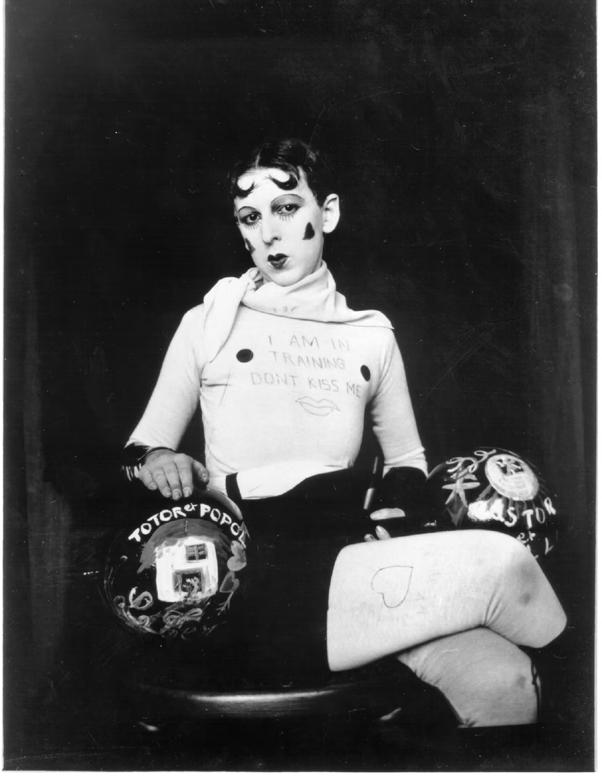
But the devil couldn’t catch Cahun yet. The island of Jersey was liberated before the execution could be carried out and Cahun had ten more years to live before disease would end their life of resistance. Their legacy in Surrealism and beyond is enormous, although it took some time for the art scene to honour it. Only in the 1990s did Cahun hit the zeitgeist – and became the unapologetic surrealist and antifascist icon they are now.
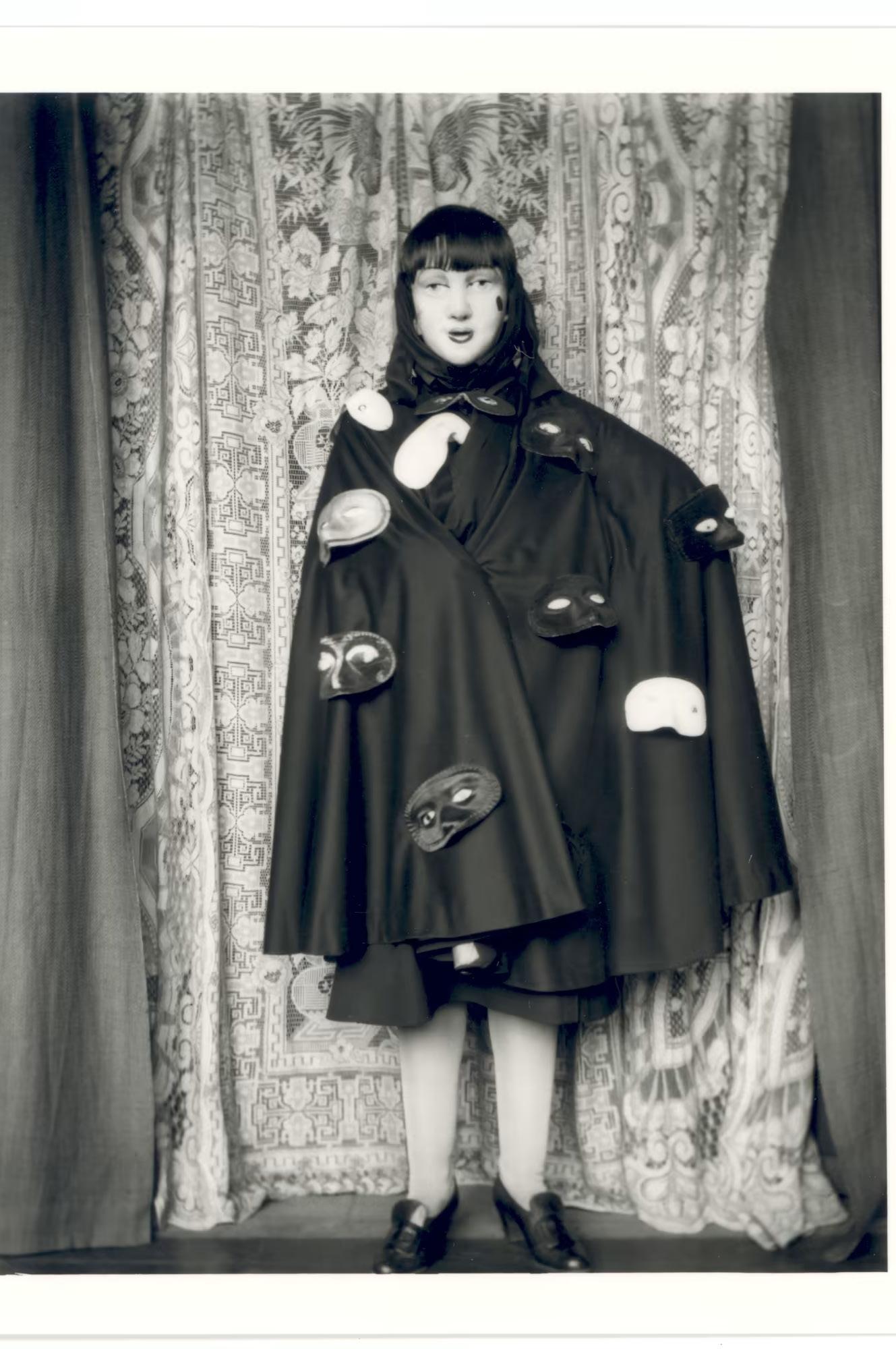
If this has piqued your curiosity and you want to learn more about Claude Cahun, the Surrealist movement and its connection to antifascism, check out the current exhibition at Lenbachhaus: Aber hier leben? Nein danke. Surrealismus + Antifaschismus, open until March 2nd 2025.
*Like the modern discourse among art historians, I will refer to Cahun with the neutral pronoun they.
Blurring Realities
-How the Phenomenon of Shifting alters our Understanding of Reality
by Lisa Maier
Experience of Matilda
Yesterday I spent my evening in the Gryffindor common room while listening to Hermione’s rant about her recent Defence Against The Dark Arts grade. She got an E (Exceeds Expectations) and still hasn’t recovered from it. Crookshanks keeps meowing at me from underneath the table, because I refuse to feed him another treat from the stash in my robe’s pockets. I hear the rustling of the Whomping Willow, as it shakes the snow off its branches.
Except - she didn’t actually spend her evening in the greenhouses of (at) Hogwarts. She were merely asleep - she “shif ted”. Shifting is the term for a phe nomenon that became especially popular during quarantine on the social media platform TikTok. While most people simply go to sleep at night, without thinking twice about what they’ll dream once they drift off, shifters have a predetermined “script” for their night.
What they try to achieve is entering their so-called “desired reality” through a special form of lucid dreaming. By practising an in tense focus, repetitive affirmations and visualizations, they are supposedly able to shift their realities entirely. Informative videos that explain the various methods for learning how to control the events in your own dreams have captured the attention of an increasingly large community of shifters.
detached from it. It’s also important to note that the desire to shift into another world can sometimes stem from quite troubling issues - often rooted in overwhelming loneliness, disconnection from the real world, or the need to escape distressing circumstances. It can become difficult to differentiate between the desired reality and actual life.
All of this leaves an eerie, unsettling feeling and raises the question: Can we truly choose the reality we want to live in? And if so, what is the “real” reality anyway?
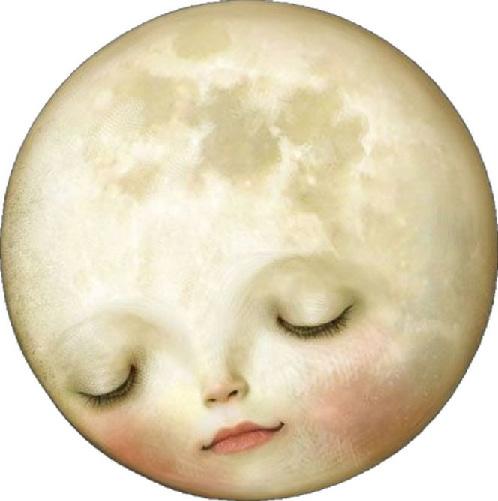
Practising shifting has led many people to prefer their desired reality over their actual lives, with some even beginning to feel more at home there. And while we can all enjoy a little escape from reality - fleeing our sometimes quite bothersome daily lives and immersing ourselves in fantastical fictional worlds - the phenomenon of Shifting takes escaping to another level. Therefore, it is important to mention the consequences accompanying this phenomenon.
The flight from reality can quickly become obsessive, taking over one’s life. Immersing too deeply in a fictional world can sever the connection to the real world, making shifters feel
Stealing Hours from the Night: The Psychology of Revenge
Bedtime Procrastination
By Atike Bolat
Aquick look into the habit of why people sacrifice sleep to reclaim personal time from their busy lives.
In the quiet of the night, a familiar habit takes over in homes everywhere. Phones light up, books are opened, or the next episode on a streaming service starts playing. However, this isn’t insomnia—it’s called ‘revenge bedtime procrastination’. It’s defined as people staying up late on purpose to take back some personal time after a long day of responsibilities.
Yearning for autonomy
Psychologically, this behavior is deeply rooted in a sense of powerlessness and a yearning for autonomy. During the day, whether dealing with work, school, or family, obligations and responsibilities dictate how our time is spent. For many, this leaves a feeling of being robbed of personal freedom and control over their time. Nighttime, however, offers a rare opportunity to rebel against the tight schedules and exercise autonomy over one’s time, even if it means sacrificing some much-needed rest.

ple sacrifice instead of treating it as essential. How bizarre… Well, as a result, the late-night hours become the only ‘safe’ space to prioritize oneself without judgment.
Trouble thinking clearly
But what does this habit really cost? The answer is a lot. Sleep is crucial for keeping our minds focused, managing emotions, and staying healthy. Skipping it too often can lead to heightened anxiety, depression, and trouble thinking clearly. Isn’t it ironic, though? The very thing people do to feel more in control ends up giving them feelings of fatigue and helplessness, trapping them in a never-ending cycle.
Silent rebellion
Revenge bedtime procrastination isn’t just a bad habit— it’s a silent rebellion against a life packed with demands and too little joy. But is stealing hours from our sleep really the answer? If our days were more fulfilling, perhaps we wouldn’t still feel the need to escape into the night.
Dopamine bursts
This phenomenon often derives from feeling emotionally drained and stressed. The end of the day should ideally be a time to relax, but for these “nighttime avengers,” it feels like a race against time. Staying up late, even when they’re tired gives them a fleeting sense of empowerment. Watching shows, scrolling through social media or playing games brings small bursts of happiness, that help them forget their stress for a while. Activities like these provide dopamine bursts that temporarily soothe feelings of exhaustion or frustration.
Safe space
This behavior also reflects a cultural problem. In societies that glorify being busy and productive, rest is often seen as unimportant. Sleep turns into something peo

Escaping Reality and Shaping Fantasy
by Carlotta Macri
Highlighting the hyperrealism in fandom and fanfiction to investigate the question: “How does fandom create an escape from reality?”
Fandom?
To understand the impact that fandom has on pop culture and modern media, we have to answer a fundamental question first: what is fandom? The term ‘fandom’ is as hard to define as the people engaging in it. What makes a fan a fan? Is it the enthusiastic consumption of a certain piece of media? The active participation in a com-
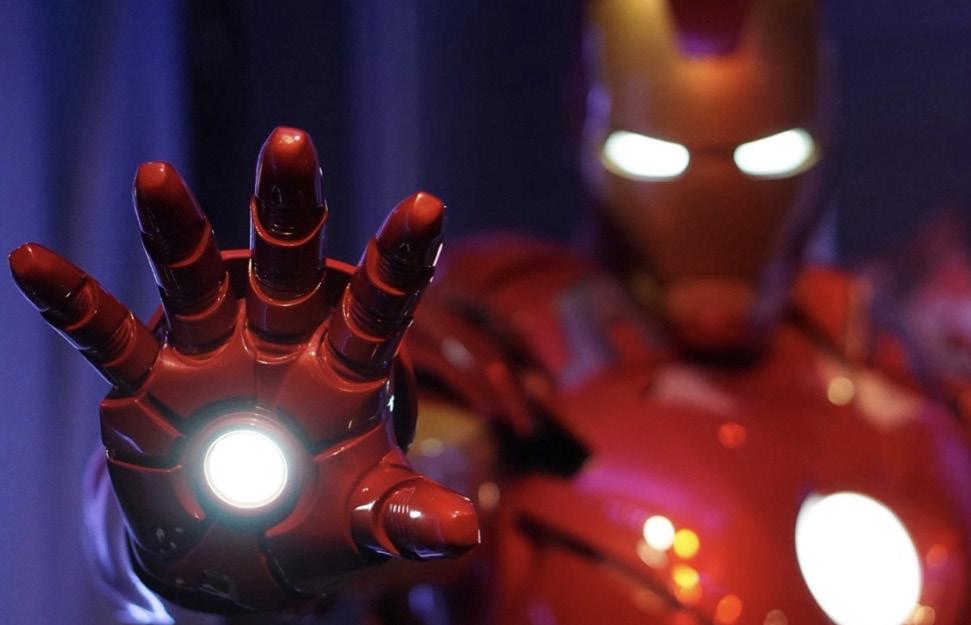
munity of like-minded individuals? Or the active production of fan content? Most people will probably agree that it is all of the above and so much more; fandom is enthusiasm, creativity, community, escapism, social criticism… and ultimately the driving force of modern media.
Hyperrealism
While there are many casual fans, enjoying all different kinds of media, most want more than that. They want their favourite characters to come to life, to live in their world alongside them. So, over the years, fan communities have found countless methods to make their dreams a reality; Cosplay, fantasy balls, live action role play, virtual reality and the origin of it all: fanfiction. Fans have succeeded in adding realism to fiction, making it hyperreal and creating an escapist illusion of alternate worlds.
Living the illusion
In the earlier years, this illusion could only be experienced vicariously through fanfiction but nowadays, there are many possibilities to dive into fantasy worlds. Through virtual reality and live action role play, fans have the op-
portunity to live in the world they wished into reality. At conventions, they can even be their favourite character for a day due to the powers of cosplay and method acting. But what adds most to the hyperrealism is meeting the actual characters and people they admire. Not only do actors and artists give autographs and take pictures, sometimes they even appear in character like Tom Hiddleston as his beloved character Loki at the San Diego ComiCon in 2013.
Collectively creating an escape from reality
By meeting characters, hugging artists and being virtually transported into fantasy, fans live an illusion and escape from reality. However, this illusion is not solely created by the authors and filmmakers whose works are admired. It is the interaction between the creators of media, the fans and the hyperrealistic works, characters and people themselves that creates the illusion. Of course, living in and striving for this illusion can have negative aspects and even exacerbate mental illnesses. Still, fandom is a mostly harmless form of escapism that does not only fuel the entertainment industry but also creates strong communities; it offers a space for friendship, creativity, individuality, commonality and dreams. The perfect escape from a harsh reality.
Further Reading:
The Routledge Companion to Media Fandom

Forging Your Identity: When New Social Media Trends Tell You
Who You Are
by Nina Wiehler
MWith so-called aesthetics and other subcultures taking over social media and gaining so much popularity, their negative effects also become more and more apparent.
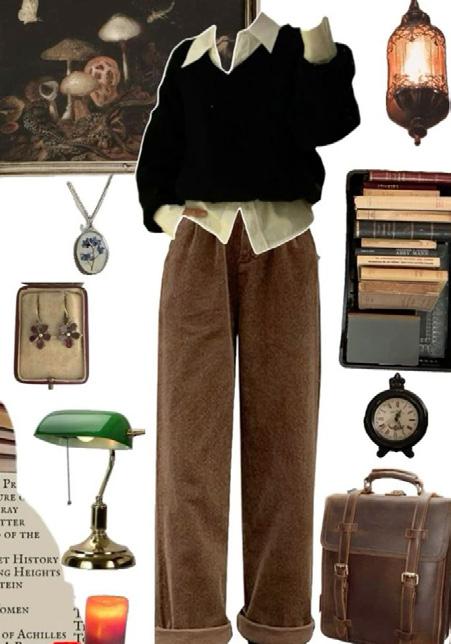
y social media is nowadays flooded with aesthetics and subcultures, which are often entitled ‘[…]core’. At first glance, they are merely terms that try to encapsulate a vibe or a concept, or even a certain feeling. They do not only apply to fashion and interior design, but also to one’s mindset and life approach. The posts usually consist of a collage of pictures or short videos, sometimes accompanied by popular music and voice-overs. So far, so good. However, taking a closer look has made me realise that they can actually do more harm than good.
An escape from our reality
On the surface, they evoke a reaffirmation of and longing for our desires; we can romanticise an ideal life with firm principles and a coherent base we can empathise with due to certain guidelines and standards, such as colour patterns, clothing pieces, or other materials. We fall victim to these posts as they operate as an escape from our reality and imperfections that are part of our lives. They tell us that being successful and thriving is possible if you just follow certain skincare steps, wear the right clothes and prepare your food as suggested by Pinterest boards.
Over-consumption and fast fashion under false pretences
That life is not easily resolved by materialism should not come as a surprise, but these trends propagate over-consumption and fast fashion under false pretences as the aspired look can only be accomplished through the purchase of several products. The truth is that these subcultures and micro-trends are often short-lived and replaced by new emerging trends.
One’s identity is complex
What is more, they paint a very romantic and idealistic picture of a lifestyle that is ultimately unrealistic to achieve. Exploring certain aesthetics that speak to you and losing yourself in the appealing photo montages and dreamy videos generate a superficial, positive self-image that lacks depth and authenticity. Yet, our identity is complex and consists of many different aspects, traits and preferences; imposing a singular label onto ourselves does not help to conceptualise a self-identity but rather causes insecurities as we cannot fulfil our expectation to realise the self-image we have adopted from watching these posts.
Confined to a box
We are fascinated by different trends and hop from one aesthetic to another even though–or rather because–we do not fit into one single category. However, the appeal of basing one’s identity on a single trait is simply avoiding coming to terms with who we really are, which cannot be easily confined to a box.

by Lisa Maier
Button-eyed Madness - a Movie Recommendation
For as long as I can remember I’ve been fascinated by whimsical, weird, fantastical worlds; Getting lost in movies like “Alice in Wonderland” and “Narnia”, spending hours in front of the TV, enchanted by dreamlike worlds and peculiar characters- it has always been my favourite way of escaping the mundane world. And even though I’ve watched a great number of films, one in particular has always had me under its spell. And that is:

a stop-motion animated movie by Henry Selick, based on Neil Gaiman’s novel of the same name. We are following the life of Coraline, a young girl who needs to adjust herself to a new life after moving into this new, mysterious house called the “Pink Palace”. Soon enough, Coraline realises that alongside its quirky and quite grotesque neighbours, the old house has many more secrets to uncover. While her parents are too busy to be bothered with the bored Coraline, she discovers a tiny door in the living room wall. To her disapointment, though, she realises that there is nothing but a brick wall behind it. This discouraging discovery starts to take a turn when Coraline opens the mysterious door again at nighttime. This time, there is no brick wall, but a magical looking, portal-like tunnel. With little hesitation, she crawls through it and enters the “other world”, where everything is almost too perfect to be true. Other parents who actually want to spend time with her, a fantastical garden, flamboyant neighbours and the best food Coraline has ever eaten. Still, the viewer is left with an eerie feeling, looking into the buttons that the characters of the Other World have instead of eyes. After going to sleep in her Other bedroom, Coraline wakes up in her normal bed, inside her normal house, being called to breakfast by her normal parents. The girl quickly concludes: it must have been a dream. Or has it? However, Coraline is determined to reenter the Other World the following night…
The way this film deals with the blurring lines of dreams
and reality is truly unique. Neither the viewer nor Coraline herself know what is real and what isn’t. It leaves a good amount of imagination to the recipient by keeping the ending rather open. Without wanting to spoil too much of the plot, the closing scenes suggest that nothing is as it seems. Alongside these thought-provoking themes, the film is filled to the brim with masterful scenery and fascinating details. Let yourself get swept away by a fantastical, enchanting adventure that will stick with you.
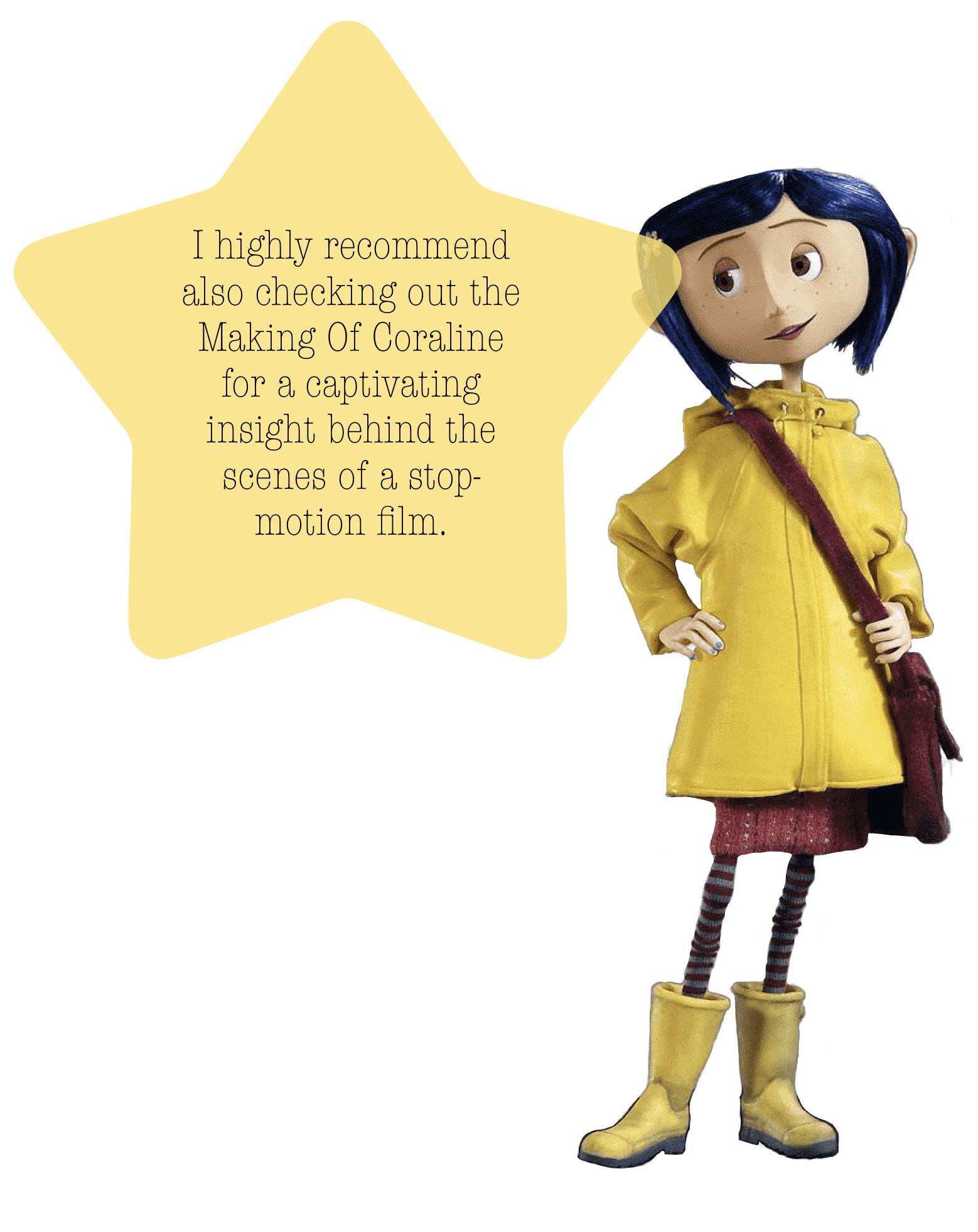
FICTOPHILE OR ICTO





I F F C R T B
S ALLING FOR ICTIONAL HARACTERS EALLY HAT AD?
by Yarimiya Adouba
This article explores fictophilia, the phenomenon of falling in love with fictional characters. I have talked to three fictophiles to show you how this presents out in the wild.

According to Forbes Magazine Online, fictophilia refers to “the intense and enduring emotional attachment, love, infatuation or desire that individuals experience for fictional characters. ” At first glance, this may seem outlandish , but chances are you’ve been enamoured by a fictional personality before without even realising it. For many, these characters offer a break from the complexities of real life. Aperson couldpotentially reachapoint where they prefer fictional characters over real people due to their “ perceivedsuperior emotional qualities and conventionally attractive physical appearance” . Toget to the bottom of this, I have interviewedfriends who sharedtheir experiences.

Pretty Little Affections

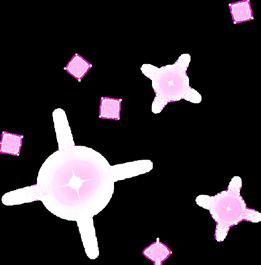




Childhood Crushes
I first interviewed E.B. from Germany. She recounted a case that started in her primary school years
“My fictional crush is from a book series called Bille & Zottel, and his name is Simon,” she began. Simon, a lond, athletic stable boy, captivated her with his personality. “I always wanted to e a boyfriend just like him.” He was also eful when dodging questions about her tic life “Whenever someone in my class d me if I had a crush on someone, I said ’ to shut them up; and I’d tell them that on’t know him.” Her fictional boyfriend as a companion in her little lies up until secondary school.
The next interview was with M.K. from California, USA. She revealed that her fictional crush is Caleb Rivers from Pretty Little Liars. “I love Caleb, he was so cool. When he appeared in season one, I thought he was a good-looking guy and the way he treated Hanna? So cute!” She was instantly drawn to his personality because “he’s an overall good person who cares for the people he truly loves, like Hanna,” who later becomes his girlfriend. “He’s really protective,” which is a trait she admires. “And I tend to be protective of my friends and family, so… yeah ”
Navigating Stigma
The final interview was with J G from Florida, USA She told me about Geto Suguru from Jujutsu Kaisen She was introduced to the character through the manga, and the character was later popularised through the anime. She has only watched the scenes where he appears and believes that the manga offers a more nuanced and detailed portrayal of his character
When I asked her if she’s in love with him, she replied “Not in love like with a real person. I love close friends, my family and pets, but I do have fictional characters which I love ” I asked her to elaborate on her expression of this love “I feel comfortable admitting that I love said fictional character, but I know some people would feel uncomfortable.”

This led me to make her elaborate on whether she thinks fictophiles should feel embarrassed “I wouldn’t say embarrassed on a level of shameful, but there should be some decorum. It’s one thing talking about your kids or your pets. But there’s a time and place for talking about fictional characters. Be mindful. Be demure. Have some sense of self when you’re talking about these kinds of things ”
This statement aligns with Geto’s portrayal in the story. “Characters can be problematic, like wanting to kill off the human race, for example. I will talk about them, but only with people who know the show.” She says. “Someone could ask me who my favourite is, and I’d say Geto. I wouldn’t tell them anything about him, though If they asked, I’d say he’s a villain, that's it He’s a really popular character, so I know I’m not crazy for saying I like him In the anime community, it’s very normal ”
Comfort and Relatability
Loving fictional characters carries significant stigma, but critics often overlook the essential truth that fictophiles are aware of the character not being real Despite this, they find comfort and relatability in their personalities, offering a fictional escape detached from life’s burdens. In M.K.’s words, “It’s like having a crush, but they’re not real. But you still get all those fuzzy and fun vibes.” Fandoms provide safe spaces where you have people who relate to you and share the same sentiment. You can simply enjoy the characters, for yourself, for who they are, despite conflicting feelings My wonderful friends encourage you to discover your own Simon, Caleb or Geto, so you can experience the comfort they’ve described yourself!

Recommended Reading



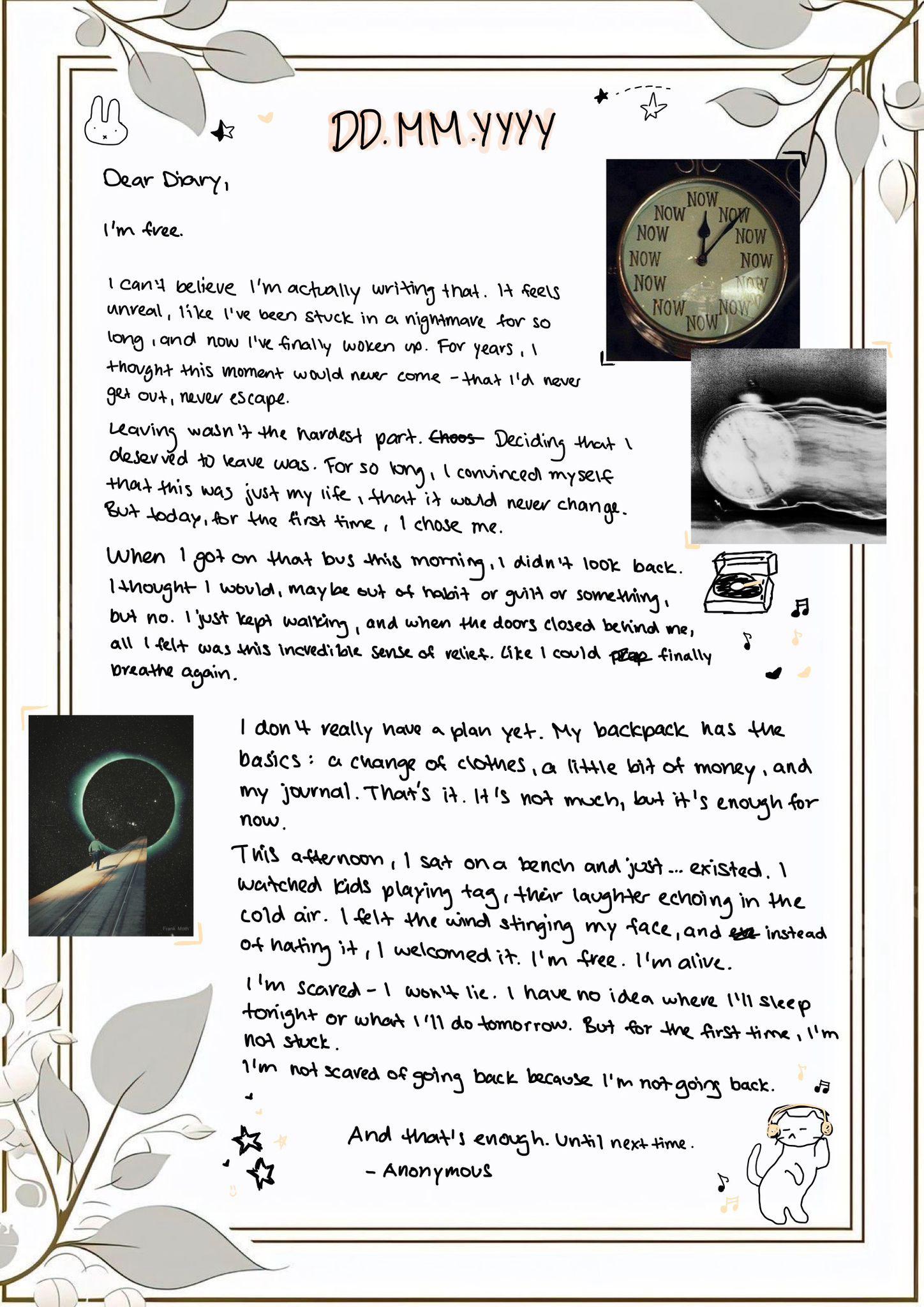

Blood, Sweat and Ink
by Yarimiya Adouba
Storytelling can be a powerful tool. It allows you to not only spill your guts and watch them stain the paper in ink, but also to dissect a situation from the
point of view of your choice unlike a journal, which, I dare say, may capture raw emotion but doesn’t allow half of the self-expression and reflection that makes writing so enticing Being a writer myself, I am guilty of scribbling elements of my real life into my stories.
All forms of fictional writing inevitably reflect what you know; mine certainly does. The implementation of a personal experience into the plot, or the projection of a specific person in your life onto a character, can be intentional or not Either way, it all stems from the same place: your mind. As human beings, we are overflowing with experiences and memories that need to be revisited. This craft is a great device for processing and reevaluation It offers a safe space for catharsis, letting you release any emotion: Good, bad, or downright ugly. Trust me, I’d know. Done in a controlled manner, you imprint the page with a deliberate keystroke, or a graceful swirl of your pen for the oldfashioned writers among us

Nothing clarifies this better than intentional fiction, where your characters tend to take the reins and decide their own fate But with the deliberate exploration of real-life events through fiction, you have the advantage of indulging freely in an experience of your choice and steering it in your preferred direction This autonomy is a masterful way to shape your source of inspiration into unique insights that you couldn’t gain anywhere else. You are endlessly exposed to a broad array of external influences that leave a meaningful mark on you. It’s unpredictable which one will resonate deeply enough to inspire, but such is the story that will be born of it.
Ultimately, the writer is the only one truly benefiting from this process. The real person featured is reinvented as a character who has undergone changes at the expense of the writer’s creativity and reflection They are painted in a new light, casting them far enough away from reality to serve the writer’s narrative. Writing is not all composition and charm. Every word demands blood, sweat and ink. All that trouble might just be the key to revealing aspects of your life that were previously hidden from plain sight This might seem enigmatic if you don’t write yourself; the only way to find out is to see for lf

Becoming acquainted with an author might be fun until you end up in their story with no control over the portrayal of your fictional counterpart
Unlocking the Power of Unlocking the Power of Music through Emotions Music through Emotions
by Anisha Brun
Unearth the secrets behind your favorite tunes: Discover how they correlate with your emotions and memory with just a few notes.
Music is probably one of the most popular forms of media and entertainment because it speaks to the masses and alludes to the heart. It is a
universal language of humanity There is music in every language and every culture I will take you on a short trip to examine our emotions and how they are set off while listening to music. To get a clear understanding, however, it is necessary to have basic knowledge of how our brain memory works and gets stimulated
The Science of Emotional Resonance in Music
According to an article in the Journal of Biology by Lutz Jäncke, our emotions are often triggered by musical memory. Auditory units are stored in our memory and combined as a percept; this can be a melody, a sound pattern or a rhythm.¹ Taking this into consideration, a specific sound is capable of awakening a certain memory which appeals to an emotion. Or we can attract the emotion ourselves by the type of music we listen to.
Music: Shaping Memories and Feelings
In our everyday lives we are always surrounded by music consciously as well as subconsciously. There is music on public transport, on the streets, in malls and many more places where we do not actively listen to it but still perceive it. Therefore, it is possible that we associate a song or a melody with a specific event.

Our emotions get set off in the process Now this can impact us differently; it can remind us of a traumatic incident as well as one of joy and laughter. It catapults us to a different time in life and can make us relive it.
Other times when we actively listen to music, we get to choose whether the song or musical piece makes us feel sentimental, nostalgic or exhilarated. The lyrics and the melody appeal to us and our imagination does the rest. People seeking pleasure and jubilance tend to listen to more upbeat music while the ones looking for a good cry will go for a gloomier tune.
Now whether you like rock music, dance pop, melancholic music, classical or Indie they are all in a position to make you feel different sensations and unite with people. So, pop in your earphones and get carried away.

¹ Jäncke, Lutz 2008 “Music, Memory and Emotion” Journal of Biology 7 6: 1–4
Only One Click Away: Meditation to Go
by Alicia Barth
Have you ever tried…meditation? This personal review of three meditation and mental health apps might suggest a way to get into a more relaxed mode for exam season.
A Personal Favourite

Who wouldn’t like to keep a cute, digital pet just like in the golden days of the early 2000s while simultaneously keeping watch on your mental health? If that sounds intriguing, Finch might be the app for you. Designed with an adorable interface, your Finch, which you get to name, dress and accessorise however you like, leads you through simple daily tasks to escape your mind. This of course includes meditation, for which Finch offers timers, guided breathing exercises or soundscapes for perfect relaxation. Apart from that, it offers a great way to keep track of your habits, your daily goals, general mindfulness and to keep a digital journal. The best part: once you reach a certain number of points with your exercises, your little bird goes on an adventure and explores different parts of the world while learning about new foods, animals or songs!
While a paid version exists, Finch is perfectly usable as a free download and amazingly, the app is supported by socalled ‘guardians’, who sponsor premium subscriptions. If you’re lucky, you get automatically selected!
A special section: Finch offers a ‘First Aid Kit’ with short exercises for anxiety and panic attacks.
The Classic
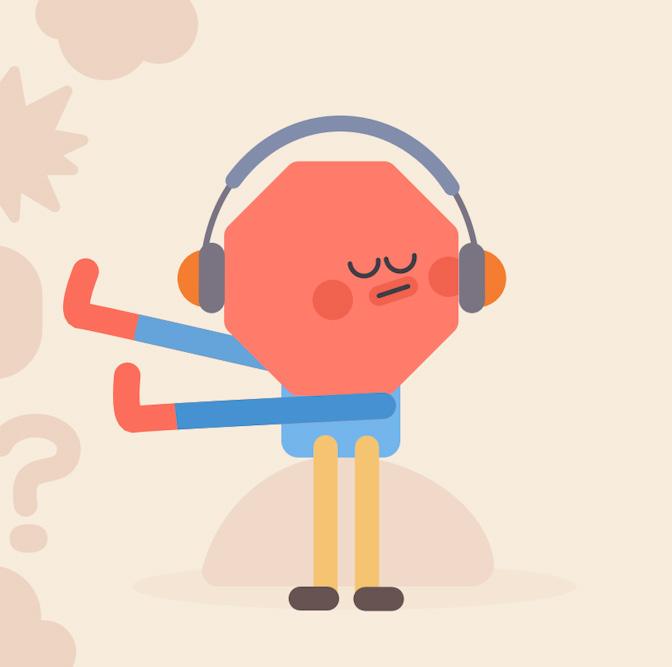
Headspace is probably the most popular meditation app on the market, and with good cause. The modern, clean design welcomes you warmly and makes you want to start right away. Headspace offers a great variety of themed meditations: from introductory courses for beginners to sessions about anxiety to more specific topics like work, body image, or struggles with parenthood. While the focus lies clearly on the classic meditation, it also provides options to step out of that familiar space: perhaps a guided walk in the woods or some binaural beats for extra relaxation? And if you want to experience the joys
of a bedtime story again, the ‘sleepcasts’ transport you to another place. The app has it all.
Unfortunately, Headspace has greatly reduced its free content over the years, so a (quite pricy) subscription of €12,99 per month is almost unavoidable, which makes the app not ideal for students. However, from time to time there are special offers, which are worth thinking about.
A tip for runners: If you want to experience a mix of meditation and guided walks, check out the guided runs on the Nike Running app that are in cooperation with Headspace. Andy Puddicombe, founder of Headspace, leads you through gentle, mindful runs.
Bedtime Stories by Your Favourite Artist
If pseudo-philosophical audio guides with calendar quotes aren’t necessarily your thing, there might still be an app for you: Calm. Although it has guided meditations available, the focus lies on music and sleep. Join your favourite artist and listen to their sleep stories. The choices are endless: “Dream with Me” by Harry Styles, “Crossing Ireland by Train”, narrated by Cillian Murphy, or “A Love Letter from an Englishman”, who is no other than the beloved Jonathan Bailey. If you prefer solely some background music to zone out of this world, Calm offers everything from Disney soundscapes to some soft tickling of the ivories. The catch? The price. At roughly €16 a month, Calm lies in the same pricy category as Headspace.

An Alternative
If you want to find out if meditation is for you without starting any sketchy free trials or downloading an app, there is a small work around: Apart from the free runs on the Nike app, Headspace publishes some of its meditations on YouTube and has multiple playlists on Spotify. On that app, another provider, called Mindlook, publishes guided meditations as podcasts in German. While these options don’t have the benefit of tracking your progress like the aforementioned apps would, they might still be the perfect way to take the first step out of your mind.
Digital Detox: My Self-Experiment on How to Escape Virtual Reality and to Build a Healthier Relationship to My Phone
by Nina Wiehler
I spent two weeks of social media restrictions and limited phone screen time, so you do not have to. Or maybe you want to after having read my review.
There is no perfect plan that suits everyone
Being part of Generation Z, it is almost inevitable to divide your time between the real world and social media. While social media apps started out as an enrichment for our lives in our free time, e.g. keeping in contact with schoolmates via Facebook or sharing special moments with funny filters on Instagram, they have now become a necessity which also affects us during our study and work hours. And I am no exception. However, I have decided to change my social media behaviour as I have been noticing more and more the negative effects on my wellbeing. To begin with, it is essential to analyse your relationship with social media; what you notice and what you want to change to start with your digital detox. There is no perfect plan that suits everyone – what has worked for me might not work for you. But maybe it gives you inspiration or at least a little push to concern yourself more critically with your social media (and, in general, phone) behaviour, which I think all of us should do at some point.
Impose app limits
One of my main aims is to reduce my screen time. Not only does it exacerbate my procrastination, but it also greatly affects my leisure time and my attention span, as I tend to passively engage with apps while doing something else. And since I am reluctant to put a stop to this myself, I realise
I need an external force to close the apps for me. Exploring my phone settings, I came across the subsection Screen Time, which not only tells you the amount of time you spend daily on apps (it is both a shocking and humiliating revelation), but you can also impose app limits, which will lock the apps after having exceeded the time limit. I decide to restrict TikTok and Instagram to 1h per day each, which still sounds a lot, but I used to exceed this duration in the evening, which often led to an excessive time sink.
I decided to install a timeout
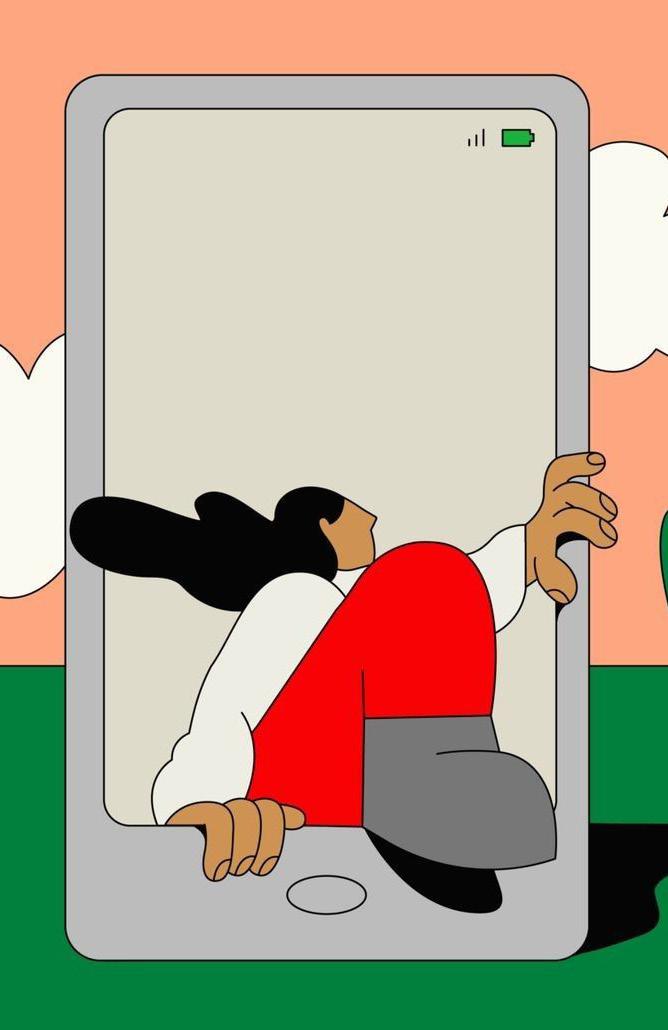
However, not only do I want to tackle the amount of time I spend daily on my phone, but also the time of the day; my phone is the first thing I pick up when waking up and the last thing I put down before going to bed, which has negative effects on my sleeping schedule. I have been struggling with insomnia where it often takes me hours to fall asleep as I feel overstimulated and am not able to quiet my mind. So I decided to install a timeout that I also found in my screen time settings, which locks chosen apps within a certain time frame. I placed it from 9.30pm to 8am, so I am offline for at least an hour before I go to sleep and after I wake up.

higher potential to increase our spending time on social media, as alternatives are limited compared to summer; and moreover, I had the luck to come down with a cold during the experiment, which I think is one of the few excuses to waste time on social media, but which was not granted to me. Nevertheless, I have been positively surprised by technology companies that have begun to concern themselves with the increasing issue of phone and social media dependency. However, depending on your phone model, some settings might not be available to you, and you might have to rely on extra apps to receive special functions, so maybe the links below can help you if you are not satisfied by the functions provided by your phone.
Focus modes that you modify for your own personal benefits
Lastly, I have been using the Do Not Disturb mode for years, which mutes phone notifications, so I only notice them when I actively pick up my phone and look at the screen. However, since then new and more advanced settings have been introduced to this: depending on the time of the day, you can choose between several so-called Focus modes that you modify for your own personal benefits. I, for example, have one mode during study time where not only my notifications are muted, but my home screen only includes essential apps excluding social media, shopping or gaming apps.
I can definitely see some improvement and positive outcomes
I must admit, if I had not pitched this idea for the magazine, I am not sure I would have tried it myself or, more importantly, stuck to it. However, I am glad I did it because I can definitely see some improvement and positive outcomes regarding my phone and social media behaviour: My screen time is reduced to almost 70% compared to before, I feel clearer in my head and my sleeping schedule is more regulated than a couple of weeks ago. It was also interesting to see what change was easier and more difficult to cope with; while it was relatively easy to stick to my new evening and morning routine, I sometimes felt frustrated when I went on my social media and did my usual scrolling, where I fell down a rabbit hole and became invested in some posts, but was eventually stopped by my time limit for the day. I have also noticed that the winter time has a

https://www.nytimes.com/2019/02/23/business/cell-phone-addiction.html
https://www.nytimes.com/wirecutter/reviews/break-up-with-your-phone/
byMaria Anna Tankielun
Step UpYour Procrastinati o n emaG
WHwo t o
Why get to work if you can let the work not get to you first? A short guide on how to do stuff ‘later’.
e all know and love it: You got a deadline for a paper, essay or even thesis coming up and you suddenly find all the time in the world to pick up all those hobbies you didn’t have time to try out during the year. Knitting, journaling, watching that TV-show that has been sitting on your watchlist for over a year… You name it, you’ve done it – while the empty sheet of calls from your messy desk. If aesthetic motivational quotes, picture-perfect productivity gurus or strict timetables make your stomach churn, fret not, because I’m here to help you forget all about them.
1
Close that empty document file on your computer. It will only make you feel bad and remind you of the deadline looming over you. It’s better tucked away in that folder hidden in another folder which is stored away in a different folder at the very bottom of your document library. Make is as difficult to access as possible.
3
Don’t give yourself a single second to reflect on yourself. Scroll social media platforms all night until you pass out from exhaustion, watch random videos while you eat and most importantly, don’t go outside. You can’t be in touch with reality, or all your hard work will be for nothing. It’s simple – if you keep your mind occupied with other activities, you won’t even get to think of the work that still needs to be done.
2
Check for new movie, series or game releases. Browse your streaming service, your local cinema’s homepage or the app store. Is there anything you’ve been dying to watch or download but completely forgot about it in the past couple of weeks when you actually could allow yourself some leniency in your time management?
4
Know your limits. When you were in a similar situation last time, how long you manage to put it off for back then? If you still managed to write a full 1,0 paper in the course of two days, you could easily pull it off again. It’s not like you might encounter any unexpected difficulties, come on… We’re optimists here!
At the end of the day, we’re all grown-ups. How we handle ourselves is our own responsibility. While there is nothing wrong with planning and spreading your work out (for many it is a very admirable skill), many find themselves able to be most productive and motivated under a large amount of time pressure. The key is knowing yourself and doing what makes you the happiest while being aware of the consequences. Tomorrow.
“Sweatizens” of the Gym
by Lucas Wörl
A
portrait of different people at the Gym.
“Geh’ ins Gymmie, werde skinny, mach’ daraus eine Show. Wir sind pretty im Bikini, das ist Bauch, Beine, Po. ”
Gyms have enjoyed great popularity in Germany, not just since Shirin David‘s “Summer hit of the year 2024”. In 2023, more than 11 million people had an active gym membership, myself included. I have been going to the gym regularly for almost two years now and during that time, I have met a remarkable number of people who all have in common that they share my passion for sport but express it in completely different ways. I have tried to categorize them and would like to present the two most prevalent types.
The first group I want to take a closer look at are the heavy lifters. You can often hear them making animal-like noises throughout the facility. It is often a hissing or humming sound that fills the room with each repetition in the exercise. The initial desire to build muscle has often developed into an addiction to lifting weights as heavy as possible and the gym has become their second home. Their attire usually includes tank tops that show off their muscles and lifting belts strapped tightly around their hips. They often gather near the squat racks, where their impressive strength draws attention - whether intentional or not.
In contrast to the heavy lifters, there are the newbies. Whether it’s the desire to build muscle, lose weight, or find a new hobby, they join the gym for various reasons. Newbies are often easy to spot. They move cautiously through the gym and occasionally watch instructional videos on their phones. Their movements may not be as fluid as those of experienced gym-goers, but their enthusiasm is catching. Some stick to the familiar machines, while others tackle the free weights with a mixture of determination and nervousness. Despite their inexperience, their presence is a reminder that everyone has begun their journey at some point. The reason I chose to write about the gym and the people there is because I see this place as a melting point for a wide
variety of personalities, motivations and stories. It‘s a place where people of all ethnicities, body shapes and ages come together, and they all share an excitement for the same thing. Some have just started their fitness journey, and for many, the gym has already become an integral part of their daily lives. Thanks to this versatility, people who perhaps wanted to start working out but were afraid of being ridiculed by experienced heavy lifters can find the courage to start their journeys as newbies.

Shirin David. „Bauch Beine Po“. Juicy Money Records, 2024.
Mighty Hot-Dogs and Magical Desserts – The Ten Best Food Spots at Disneyland Paris
by Carlotta Macri
Earth’s mightiest fast-food
After a successful day of training at the Avengers campus, recruits can enjoy one of New York’s famous classics: at the FAN-tastic Food Truck you can get delicious hotdogs to energise for your next mission, and they even have a fully vegan option! Alternatively, you can join the Avengers for their favourite Shawarma at the Super Diner
Hakuna Matata
Even though they might have health benefits and might be tasty to Timon and Pumba, bugs are not for everyone. Luckily, you can also “Hakuna Matata” with some bug-free healthy meals in Adventure Land. From a Pulled Beef Sandwich to some nourishing salads, everyone will find the perfect snack for their adventure. The Chakalaka especially is a must for a successful day waiting to be king.
A recommendation for the ten best places to get a delicious meal at the most magical place in all of Europe.

Everyone can cook… but no one cooks like chef Rémy
We have all dreamed of tasting the food Rémy cooks in the film Ratatouille. At the Bistrot Chez Rémy in the Walt Disney Studios Park, you can make you dreams come true. Shrunken down to the size of Pixar’s little chef, guests will experience authentic French cuisine in a cozy atmosphere. The must-try dish is of course the ratatouille, which is just as good as mom’s cooking.
Life is A Highway
After racing down Route 66 with Lightning McQueen, La Cantina is the perfect pit-stop. At the Tex-Mex buffet, every racer will find something to their taste. There are also a great many vegetarian and vegan options.
Under the sea
Fish are friends, yet they also taste amazing, especially at the seafood buffet at Cape Cod. Disney’s Hotel Newport Bay Club is home to two excellent seafood restaurants. At the Yacht Club, guests can enjoy a splendid three course menu with a view of the lake and an luxurious maritime atmosphere.

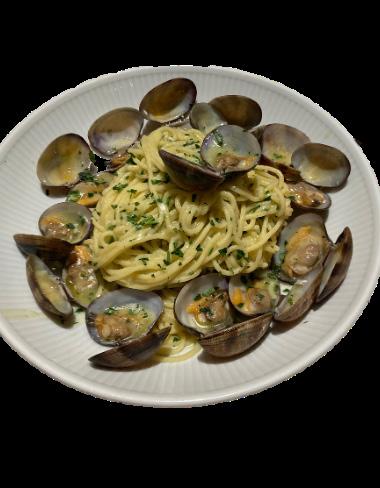
Mangiamo!
In true Luca fashion, the Portorosso Pesto Pasta at Pizzeria Bella Notte will make you a monster… a pasta monster! But the pizzeria is not the only Italian spot the resort has to offer. Get an authentic Italian three course meal in bougie atmosphere at the Manhattan Restaurant at Disney’s Hotel New York – The Art of Marvel. Sitting under an imposing Asgardian chandelier, you will be able to taste all the best flavours earth has to offer.
Theme Park classics
Popcorn, corndogs, marshmallows, fudge and many more classic theme park foods can be found all around both the Disneyland and the Walt Disney Studios Park. As are the classic Mickey Waffles, which are made fresh for every customer and are especially delicious at the Victoria’s HomeStyle Café on Mainstreet.
Top 3 Must-Visit Destinations in Zurich
by Anisha Brun
If you ever wanted to visit Switzerland, more specifically Zurich, there are some places you should not miss out on. Here are three spots you just have to visit; take it from a Zurichoise.


Zurich Lindenhof: Great Views and Interesting History
This is a very popular place and everybody will tell you to go there, but I promise it is worth it. Even we, from Zurich, like it and we tend to avoid the more touristy stuff. It is located in the heart of the city and you get an amazing view of the old town, lake Zurich, the river Limmat, Grossmünster church and the city hall. There are also a lot of chess fields strewn across the courtyard for passionate chess players. In the Middle Ages Lindenhof was a royal palatinate under the Carolingians. Up until the Early Modern period it used to be the meeting place of all the locals. In 1798 the oath of the Swiss constitution was sworn at the Lindenhof. There are many more significant historical facts; how about checking them out while visiting? They are all shown and explained on a plaque on site.
Address: Lindenhof, 8001 Zurich
Café Conditorei 1842: A Niche Little Place
Café Conditorei 1842 or previously known as Conditorei Schober is a chic little café with homemade patisserie, cakes and lots of chocolate. It is also a great brunch and lunch spot with many different options. From eggs benedict and croissants with jam to different salads and tarte flambée. It is also vegetarian and vegan friendly. What I think makes this place so extraordinary is its Neo-Baroque interior and the workers’ concept. They are an inclusive business that
works together with the Stiftung Arbeitskette for troubled teens and young adults where they get another chance at learning a trade.
Address: Napfgasse 4, 8001 Zurich


enSoie: Shopping like the Locals
Now, if you really want to feel like a local enSoie is the place to go. It is a small shop in Zurich old town just a few meters off the famous shopping street ‘Bahnhofstrasse’. The shop only exists in Zurich and is therefore an exclusive trademark. It is not known anywhere else in Switzerland or beyond. The items from the shop really are a trademark to being from Zurich. Like most things in Zurich the items are rather expensive but the quality is impeccable. It used to just be a silk-trading company founded in 1894 but now you can get everything from beautiful highquality jewelry to cute little knickknacks, bags, accessories and ceramics. Everything in the shop is made in Zurich.
Address: Strehlgasse 26, 8001 Zurich
I hope this has enticed you to visit these places and you will be just as enamored with them as I am!
Escape Crossword
by Katja Zhiltsova

ACROSS
3. A snug, secret place where transformation begins.
5. A false belief that feels like unshakable truth (D...).
7. The place where one never grows up, “second star to the right, and straight on till morning.”
9. Putting things off to scroll, snack, or nap.
12. Rising above limits to touch the infinite.
15. The scenic route you didn’t plan but maybe needed.
18. A high so pure, it feels like flying.
19. A rare and tranquil state, or a sci-fi spaceship’s name.
20. Dressing up and acting like a favourite character.
22. A way for fans to create new adventures for beloved characters.
23. A digital prison disguised as ordinary life (think about a guy in dark glasses!).
25. A school where lessons include broom flying and battling trolls.
26. The unknown that begins after death.
28. A thrilling, heart-racing escape into romantic obsession.
29. Refusal, but one of the steps in the process of acceptance.
30. The land where Hobbits live.

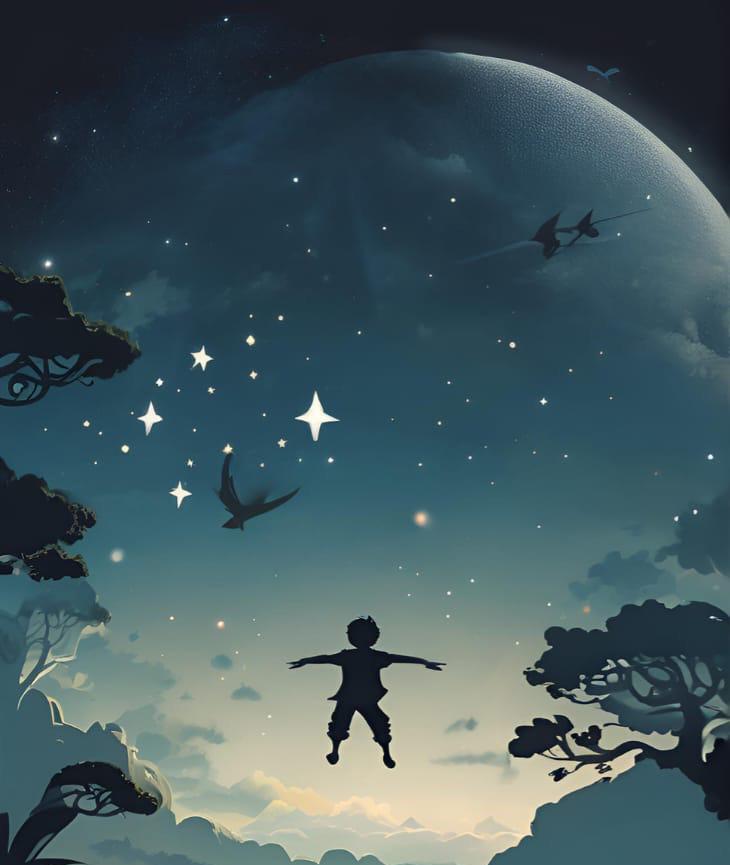
DOWN
1. A moment when you mentally check out, leaving reality behind.
2. The magic hour when day slips into night—or vampires sparkle.
4. A snowy land of fauns, witches, and talking lions (have you searched in your wardrobe?).
6. A shimmering promise that fades the closer you get (Why is it so hot and dry?).
8. A wanderer whose home is wherever they lay their head.
10. Falling for a fictional character who feels more real than reality.
11. A fleeting escape into the theatre of the mind.
13. Banished from home and living somewhere else.
14. A curious place where up is down and cats grin.
16. A sunken utopia land lost in the depths.
17. A perfect, harmonious world where everything is ideal.
19. Being alone, but in a calm and peaceful way.
21. A prison where hope digs its way out with a rock hammer.
24. A maze full of twists, turns, and surprises.
27. Turning to books, games, or shows to avoid reality.
Escaping the Magazine
by Tom Sellmair
A quiz that includes nine articles and gives a solution word if answered correctly.
How does Andy Dufresne adapt to prison life in The Shawshank Redemption according to the article?
A) By learning to play by the rules of the prison
B) By isolating himself from other inmates
C) By organizing a rebellion against the corrupt prison administration
How did Claude Cahun challenge traditional surrealist representation of women?
D) By creating purely erotic and symbolic imagery
E) By posing with masks, silver foil wings, and a body suit that read “I am in training, don’t kiss me”
F) Focusing on realistic portraits of women
What is the primary mechanism through which music evokes emotions, according to Lutz Jäncke‘s research cited in the article?
G) Music stimulates brainwave patterns to create emotion
H) The tempo and volume of music directly stimulate emotional centers in the brain
I) Emotions are triggered by musical memory, where auditory units stored as percepts recall specific memories or feelings
2 3 4 ???
What is the main psychological reason behind revenge bedtime procrastination?
J) People enjoy staying up late for social reasons
K) People feel a sense of autonomy and control over their time after a busy day
L) People are trying to avoid the stress of the following day 1
What is the primary way fandom creates an “escape from reality” according to the article?
M) Through active participation in communities and the creation of fan content like fanfiction, cosplay, and virtual reality experiences
N) By allowing fans to interact directly with the creators of media
O) By exclusively consuming media without engaging in any creative activities
According to Nina Wiehler in „Forging Your Identity: When New Social Media Trends Tell You Who You Are,” what is one of the negative effects of social media trends related to aesthetics and subcultures?
P) They encourage a deeper understanding of one‘s true identity
Q) They can create insecurities by promoting unrealistic self-images
R) They focus solely on sustainable fashion and trends
What is the main point the author is making about the relationship between writers and their characters in the article “Blood, Sweat, and Ink”?
S) Writers often avoid incorporating their own experiences into their fictional stories
T) Characters in fiction always reflect real people exactly as they are
U) Writing allows authors to process their emotions and experiences by reflecting them in their fictional characters
V) Retreating into a hard shell
W) Changing skin color and pattern
X) Releasing a cloud of dark ink
What was one of the most critical tools the escapees used to widen the vent in their cells during the Alcatraz escape described in the article?
Y) A hacksaw smuggled from the workshop
Z) A drill made from a broken vacuum cleaner motor
Ä) A hammer fashioned from prison scrap 5 6
7 8 9
What is the primary defense mechanism used by most cephalopods, such as squids, octopuses, and cuttlefish, to escape predators?
Solutions for Crossword Puzzle and Quiz
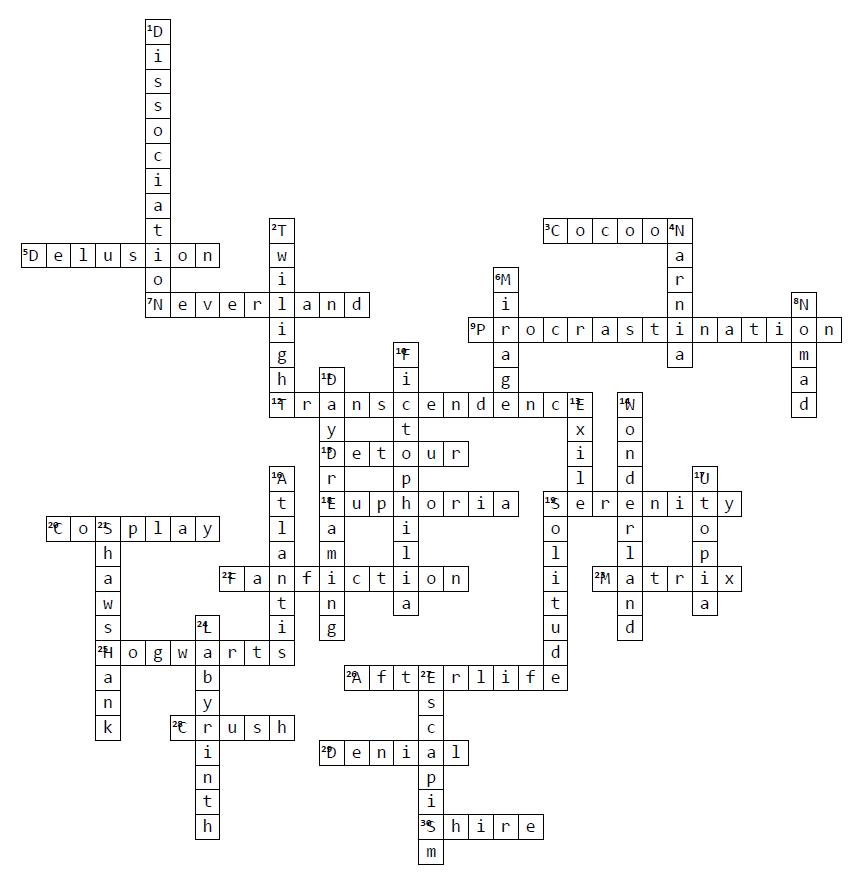

Welcome to the twelfth edition of the English Department Writing Skills 2 course /mægəˈzi:n/. It has been another very rewarding semester, working together with such a talented and cooperative team to produce this edition.
Many thanks to everybody involved, including the organisers, bakers and sellers of delicious cakes (without which there would be no magazine) and special thanks to editor Alicia for putting the whole thing together, to Atike and Tom for the photos, to Anisha and Yarimiya for curating our Instagram presence, and to Lisa and Nina in particular for the fantastic layout and all the time and work that has involved.
I am now passing the baton on to my friend and colleague Joe Genlloud to take charge of the thirteenth edition. Not an “Escape”, just a change!
If you have any questions or comments on this edition, please contact me: jacobflynn@lmu.de
Or if you want information about how to get involved in the thirteenth edition (SoS 2025), please contact Joe: Genlloud@anglistik.uni-muenchen.de
We would like to thank AnglumniLMU for their support and generosity in funding us. Thank you also to the Department of English and American Studies at the LMU.

Printed by: WIRmachenDRUCK GmbH Mühlbachstr. 7 71522 Backnang Deutschland www.wir-machen-druck.de
COPYRIGHT INFORMATION
cover images: Pinterest; p. 5: nytimes.com, wikipedia.org, guinnessworldrecords.com; p. 6: IMDb Pictures; p. 7: https://www.fbi.gov; p. 8-9: by Jan and Jens; p. 10: jerseyheritage.org, Claude Cahun; p. 11-12: Pinterest; p. 13: unsplash.com, by Carlotta Macri; p. 14-15: Pinterest; p. 16-17: Pretty Little Liars, Jujutsu Kaisen, Canva; p. 18: Pinterest; p. 19: Pexels, Canva; p. 20: Pinterest, by Anisha Brun; p. 21: headspace.com, Appstore; p. 22-23: Pinterest; p. 25: AI generated; p. 26-27: by Carlotta Macri; p. 28-29: cafe1842. ch, by Anisha Brun; p. 31: AI generated; p. 35: pngegg.com
